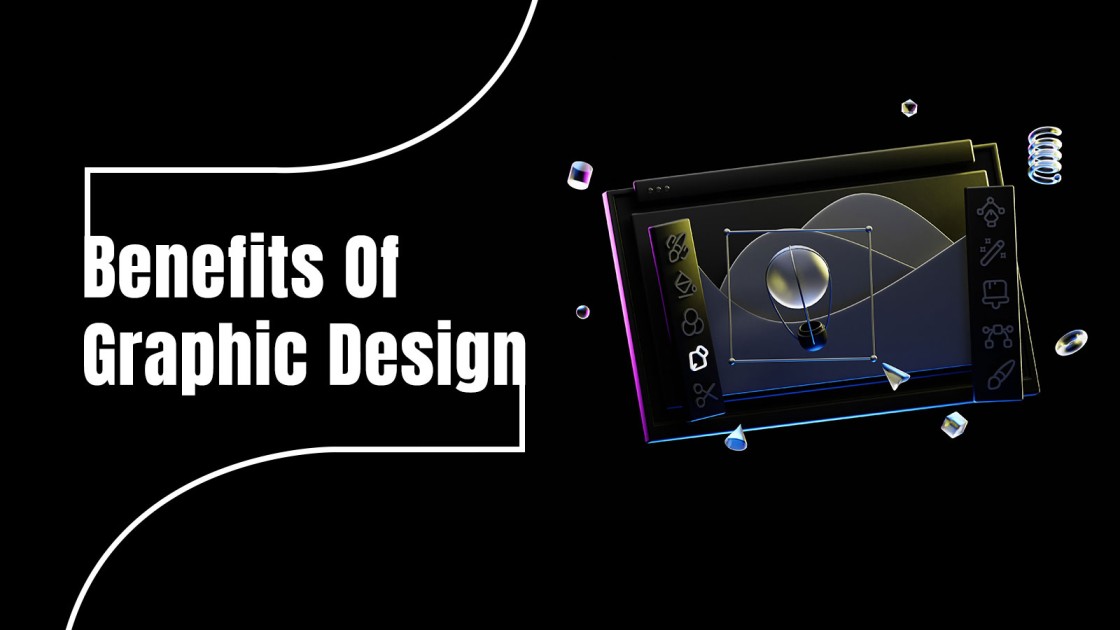
9 Benefits Of Graphic Design For Any Business
Prepare to start on a visual journey as we unveil the engaging world of graphic design and its myriad benefits. In a fast-paced, digitally-driven age, the benefits of graphic design extend far beyond aesthetics—it’s a powerful tool that can shape narratives, ignite emotions, and drive impactful change.
As we navigate through this blog post, we’ll disclose nine distinct advantages that graphic design offers. Join us as we explore the versatile advantages of graphic design, from fostering brand identity and communicating effectively to driving growth and unleashing creativity.
Discover the pivotal role it plays in shaping perceptions, captivating audiences, and propelling ventures into the future.
What Is Graphic Design?
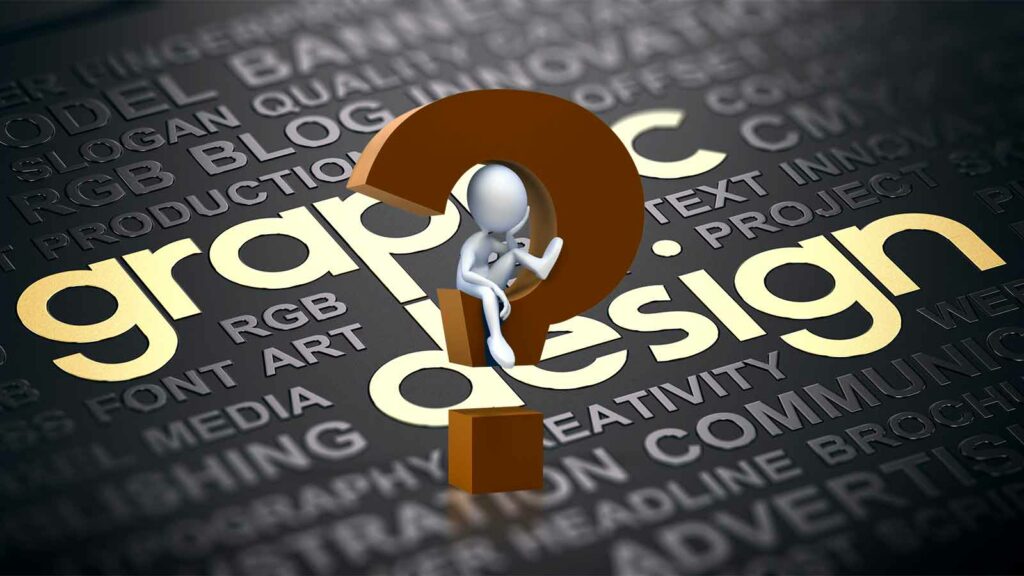
Graphic design is a creative discipline that involves visually communicating ideas and messages using images, typography, and layout.
It combines artistry with strategic thinking to craft visuals that convey a specific message or evoke a desired response.
Designers utilize various tools and techniques to create logos, branding materials, advertisements, websites, and more, ensuring aesthetic appeal and effective communication.
Whether in print or digital form, graphic design plays a crucial role in enhancing brand identity, conveying information, and engaging audiences in an aesthetically pleasing and impactful manner.
9 Benefits Of Graphic Design
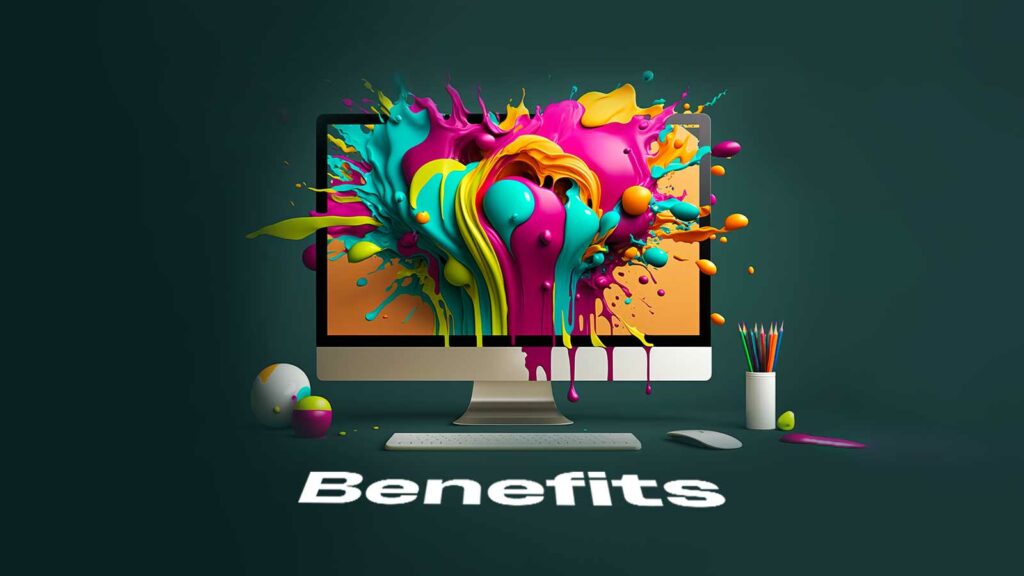
Benefit 1: Enhances Brand Recognition And Identity Through Compelling Visuals.
Graphic design is a potent tool that amplifies brand recognition and identity by harnessing the power of captivating visuals. Through carefully crafted designs, it establishes a cohesive and distinctive visual language that resonates with target audiences.
Logos, color schemes, typography, and imagery are harmoniously blended to create a unique brand identity that is instantly recognizable and memorable.
The strategic use of visuals ensures that your brand is imprinted in the minds of consumers, making it easier for them to recall and associate with your products or services.
This heightened brand recognition forms a vital component of successful marketing strategies, fostering a strong connection with consumers and enhancing their trust in your brand.
In a competitive market, a well-defined visual identity sets your brand apart, allowing it to stand out and leave a lasting impression on potential customers, ultimately contributing to business growth and success.
Benefit 2: Persuasively Conveys Messages And Ideas, Influencing Audience Perception.
Graphic design possesses the compelling ability to persuasively convey messages and ideas, wielding a profound influence on audience perception.
Through carefully orchestrated design elements such as layout, color schemes, typography, and imagery, graphic designers craft a visual narrative that evokes specific emotions, thoughts, and actions in the viewer.
These designs are strategically structured to guide the audience’s interpretation and understanding of the intended message, making it more impactful and memorable.
The arrangement of visual elements can direct attention, highlight key information, and provoke desired reactions, all of which are crucial in effective communication.
By understanding the psychology of design, designers can harness this influence to elicit the desired response from the target audience, whether it’s to buy a product, support a cause, or embrace a particular viewpoint.
Benefit 3: Infuses A Distinct Personality Into Your Brand Through Creative Design Elements.
Injecting a unique character into your brand, creative design elements play a pivotal role in crafting a distinct personality. By integrating innovative visual components such as logos, color palettes, typography, and imagery, your brand takes on a one-of-a-kind persona that sets it apart in a sea of competitors.
These carefully curated elements resonate with your target audience, forging an emotional connection and defining the essence of your brand.
The choice of colors can evoke specific moods and perceptions, while the logo encapsulates the brand’s essence in a singular, memorable symbol.
Typography, too, communicates a brand’s voice—be it authoritative, friendly, or sophisticated. Through thoughtful design choices, your brand becomes more than just a product or service; it becomes a relatable and memorable entity, fostering a deeper level of engagement and affinity with your audience.
Benefit 4: Leaves A Lasting Positive Impression, Establishing Credibility From The Outset.
Leaving an indelible positive mark, it forges credibility right from the start. Through meticulous design, your brand creates a lasting and favorable first impression on its audience, establishing trust and confidence.
The visual elements and aesthetics chosen meticulously for your brand reflect professionalism and competence, portraying a company that takes its identity seriously. This initial favorable perception is crucial, as it paves the way for potential long-term relationships with customers, partners, and stakeholders.
When design elements align seamlessly with your brand’s values and messages, they project authenticity and reliability, reinforcing the brand’s credibility in the eyes of the audience.
In essence, the impact of this initial positive impression ripples through the entire brand-consumer relationship, fostering trust and reinforcing a belief in the quality and integrity of your offerings.
Benefit 5: Distinguishes Your Brand In A Crowded Market, Fostering A Competitive Edge.
By standing out amidst a sea of competitors, it nurtures a competitive edge for your brand. Through strategic design choices, your brand emerges as unique and distinct in a crowded marketplace.
This distinctiveness is not only eye-catching but also communicates a sense of innovation and originality. It enables your brand to capture attention and be remembered amidst the noise of numerous alternatives.
When design elements are carefully tailored to encapsulate your brand’s essence and value proposition, they effectively convey what sets your brand apart.
This strategic differentiation amplifies your market position, attracting a dedicated consumer base seeking precisely what your brand uniquely offers.
Consequently, this distinction bolsters your brand’s competitiveness by creating a niche and solidifying a position that is unparalleled and compelling in the minds of your target audience.
Benefit 6: Facilitates Precise Targeting, Effectively Connecting With The Desired Audience.
Enabling accurate targeting forms a strong connection with the intended audience. Through meticulous design strategies, your brand can tailor its visuals and messaging to resonate with a specific demographic or market segment.
The use of design elements such as color psychology, imagery, and language style can be finely tuned to align with the preferences and characteristics of the target audience.
This precision ensures that the brand’s message reaches the right people in a compelling and relatable manner.
By understanding the unique traits and behaviors of the desired audience, the design can speak directly to their needs and aspirations, effectively engaging and capturing their attention.
In essence, strategic graphic design acts as a bridge, seamlessly connecting the brand with its intended audience, resulting in increased brand affinity and successful marketing outcomes.
Benefit 7: Promotes Brand Visibility And Recognition Through Strategically Crafted Designs.
Raising brand visibility and recognition, thoughtfully crafted designs are the driving force. Every design element, meticulously chosen and strategically placed, propels your brand into the spotlight.
Colors, fonts, imagery, and layouts work harmoniously to ensure your brand is not just seen but remembered. Consistency in design across various platforms amplifies brand recognition, imprinting it in the minds of the audience.
Furthermore, designs can be tailored to evoke specific emotions and attitudes, establishing a unique brand personality that sticks with your target audience. In the vast ocean of businesses, these distinctive designs act as a beacon, guiding consumers to your brand.
Ultimately, by leveraging well-crafted designs, your brand can claim its deserved place in the market’s consciousness, fostering familiarity and affinity among both existing and potential customers.
Benefit 8: Captivates And Sustains Customer Interest, Ensuring Prolonged Engagement.
Capturing and maintaining customer interest secures enduring engagement. Purposeful design elements are skillfully integrated to captivate the audience, enticing them to explore further.
Compelling visuals, intuitive layouts, and enticing content draw customers into an immersive brand experience.
Beyond initial attraction, these designs are structured to sustain interest over time, keeping customers engaged in a meaningful dialogue with your brand.
Whether through interactive graphics, thoughtfully designed websites, or visually appealing marketing materials, each design component contributes to a seamless and enjoyable customer journey.
This sustained engagement is vital, fostering a lasting relationship between the brand and its customers, ultimately translating into increased brand loyalty and advocacy.
In essence, strategic graphic design acts as a dynamic catalyst, ensuring that your brand remains a captivating and valuable presence in the eyes and hearts of your audience.
Benefit 9: Nurtures Trust And Cultivates Lasting Relationships With Your Customer Base.
Cultivating trust and nurturing enduring relationships with your customer base is the essence of well-crafted design. Every element, thoughtfully chosen and expertly executed, works towards building credibility and fostering a sense of reliability.
Consistent, polished design instils confidence in your brand, conveying professionalism and dedication. When design aligns seamlessly with your brand’s values and promises, it creates a sense of authenticity that resonates with customers, forming the bedrock of trust.
Over time, this trust evolves into a lasting relationship characterized by loyalty and advocacy. Design, therefore, becomes a powerful conduit through which your brand communicates its commitment, integrity, and genuine interest in its customers, solidifying a bond that goes beyond transactions, transforming customers into brand advocates and allies.
Data Statistics and Importance Of Graphic Design
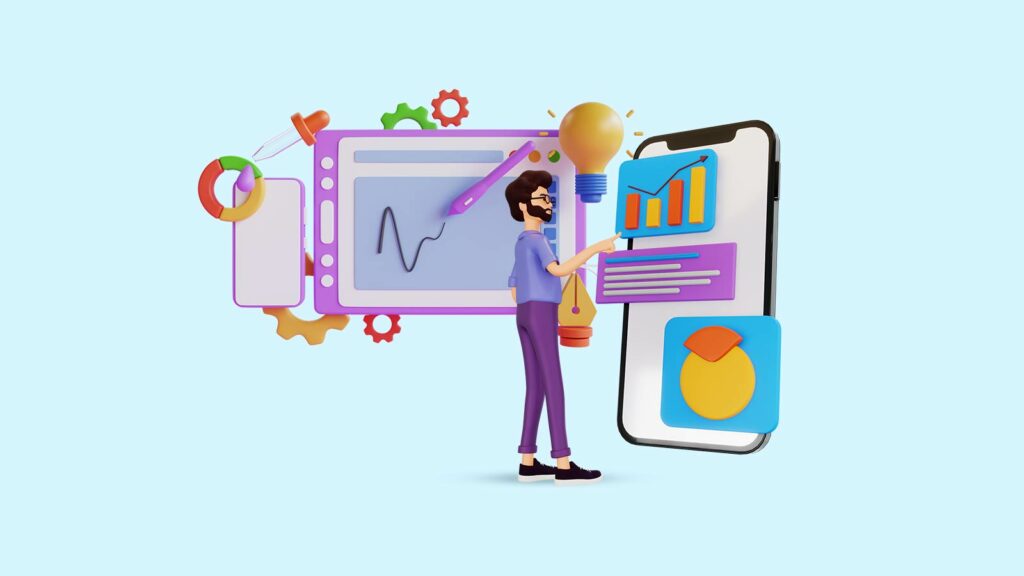
Graphic design is a dynamic and influential industry that leaves an indelible mark on various sectors of the global economy.
From shaping brand identities to transforming how information is communicated, benefits of graphic design cannot be overstated.
Let’s delve into the realm of data and statistics to unravel the immense importance and impact that graphic design holds in today’s world.
1. Market Dynamics: A $43.4 Billion Industry
The global graphic design market has burgeoned, reaching a substantial market size of $43.4 billion. This phenomenal growth underscores the increasing demand for visually appealing content and design expertise across diverse industries.
2. Workforce Insights: Profiling Graphic Design Professionals
a) Employment Landscape:
The industry employs a massive workforce of 507,690 graphic designers globally, with 265,000 of them based in the United States. This data attests to the widespread presence and demand for graphic design expertise.
b) Gender Distribution:
A relatively balanced gender distribution is observed among graphic designers, with 50.2% being female and 49.8% male. This signifies that the profession is attracting talent from both genders.
c) Job Retention:
A notable statistic reveals that 54% of graphic designers change jobs within the first two years, showcasing the dynamic nature of the profession and a willingness to explore opportunities.
d) Education Profile:
A significant majority, comprising 68% of graphic designers, possess a Bachelor’s degree. This speaks to the industry’s emphasis on educational qualifications and specialized training.
3. Business Perspective: The Value of Design in Marketing
a) Small Businesses and Design:
A staggering 80% of small businesses acknowledge the importance of design in their branding and marketing materials. This corroborates the vital role graphic design plays in shaping a brand’s image and customer perception.
b) Visual Content:
A striking 50.5% of marketers emphasize the significance of visual content, underscoring the critical role that graphics play in engaging audiences and driving marketing success.
4. Changing Trends: Adapting to Evolution
This year, the graphic design landscape witnesses trends embracing vibrant fluorescent color palettes, a throwback to 90s nostalgia, and the resurgence of embossed packaging. These trends highlight the industry’s ability to evolve and adapt to changing preferences, ensuring designs stay relevant and appealing.
5. Economic Contributions: Fortune 500 and Job Markets
a) Fortune 500 Impact:
The influential Fortune 500 companies are significant employers in the graphic design realm, accounting for over 17% of the industry’s employment. This indicates the pivotal role these top-tier companies play in shaping design trends and setting industry standards.
b) Salary Insights:
Graphic designers specializing in UX design enjoy the highest earnings, with an average annual salary exceeding $110,000. This showcases the lucrative opportunities available in specialized design domains.
c) Average Earnings:
On average, a graphic designer in the US earns around $50.7k per year and approximately $24 per hour. These figures portray a competitive earning potential within the industry.
6. Software Landscape: Tools of the Trade
a) Software Market Share:
Photoshop reigns supreme as the most popular graphic design software, commanding a substantial market share of 43.8%. This underscores its widespread use and influence in the design world.
7. Future Outlook: Demand and Growth Prospects
a) Job Demand:
The demand for graphic design professionals is projected to grow by 3% by 2031. This reflects a positive outlook for the industry, indicating sustained growth and job opportunities in the coming decade.
Graphic design is undoubtedly a powerhouse in today’s interconnected world. With its ability to convey messages, evoke emotions, and influence perceptions, this creative discipline continues to shape businesses, marketing strategies, and consumer experiences.
As we move forward, it’s evident that the impact of graphic design will only intensify, solidifying its position as a vital force in the global economy.
What Are The Key Elements Of Effective Graphic Design?
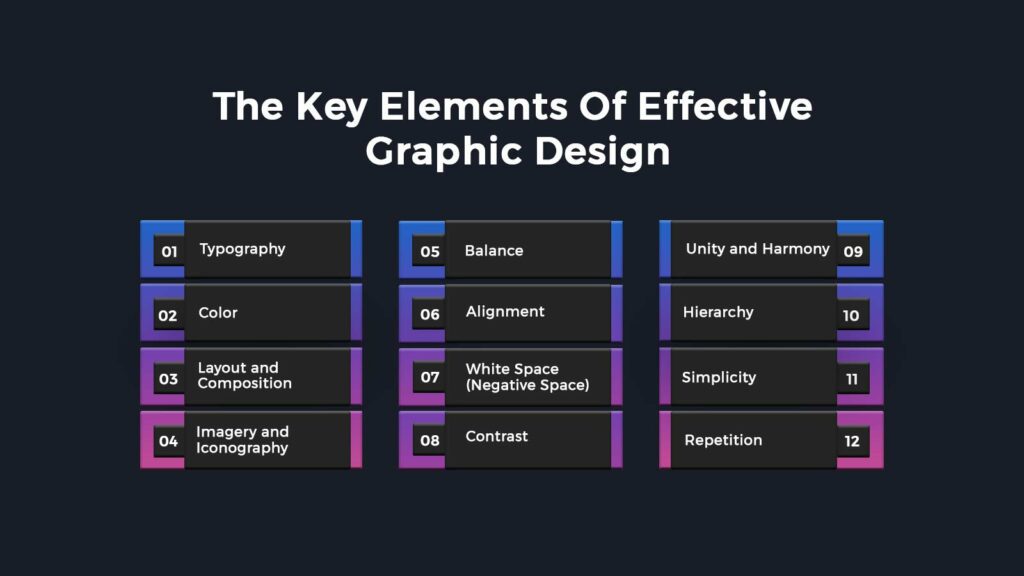
Effective graphic design is a result of carefully combining various key elements to convey a message, evoke emotions, and achieve a specific purpose. Here are the key elements:
- Typography: Choosing appropriate fonts and arranging them effectively to enhance readability and convey the brand’s personality.
- Color: Strategic use of colors to evoke emotions, create visual hierarchy, and establish brand identity.
- Layout and Composition: Organizing elements and content in a visually appealing and balanced manner to guide the viewer’s eye and communicate the intended message.
- Imagery and Iconography: Selecting and using relevant images, illustrations, or icons to enhance visual appeal and convey meaning.
- Contrast: Using differences in color, font size, or weight to create emphasis, highlight essential elements, and improve readability.
- Balance: Distributing visual elements evenly to achieve equilibrium in the design, whether symmetrical, asymmetrical, or radial.
- Alignment: Arranging elements to a consistent line or grid to enhance readability, organization, and aesthetic appeal.
- White Space (Negative Space): Leveraging empty spaces to reduce clutter, improve focus on key elements, and enhance overall aesthetics.
- Unity and Harmony: Ensuring all design elements work together cohesively to present a unified and consistent visual experience.
- Hierarchy: Structuring design elements to guide the viewer’s eye and emphasize the most important information in a logical order.
- Simplicity: Striving for clarity and minimalism to convey the message effectively and avoid overwhelming the audience.
- Repetition: Using consistent design elements throughout the piece to create a cohesive and recognizable visual identity.
Which Industries Benefit The Most From Graphic Design?
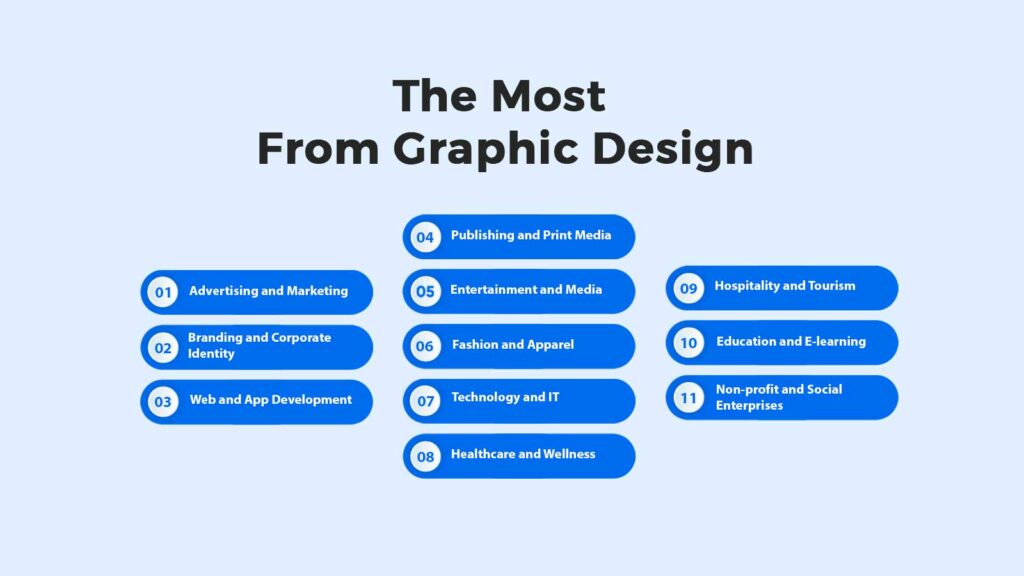
Graphic design is a versatile discipline that benefits a wide array of industries, enhancing their communication, branding, and visual representation. Here are some industries that particularly benefit from graphic design:
- Advertising and Marketing: Graphic design is fundamental in creating compelling advertisements, promotional materials, and marketing campaigns that attract and engage target audiences.
- Branding and Corporate Identity: Industries rely on graphic design to establish a strong brand identity, including logos, color schemes, typography, and visual elements that define the brand’s persona and recognition.
- Web and App Development: The user interface (UI) and user experience (UX) design are crucial in web and app development. Graphic design ensures an appealing and intuitive interface, enhancing user engagement and satisfaction.
- Publishing and Print Media: Graphic design is essential for magazines, newspapers, books, brochures, and other print materials, ensuring visually appealing layouts and enhancing readability.
- Entertainment and Media: The entertainment industry heavily relies on graphic design for movie posters, promotional materials, album covers, and digital content, enhancing audience engagement and visual appeal.
- Fashion and Apparel: Graphic design is vital in the fashion industry for creating appealing designs for clothing, accessories, packaging, and marketing materials.
- Technology and IT: Tech companies use graphic design to create visually appealing websites, product interfaces, infographics, and marketing materials, enhancing brand perception and user engagement.
- Healthcare and Wellness: Graphic design is used in healthcare for creating informative brochures, medical illustrations, branding, and educational materials that convey complex information in an accessible manner.
- Hospitality and Tourism: In this industry, graphic design is crucial for creating enticing promotional materials, event signage, menus, and branding collateral to attract customers and enhance their experience.
- Education and E-learning: Graphic design plays a vital role in educational materials, e-learning platforms, infographics, and presentations, making learning visually engaging and effective.
- Non-profit and Social Enterprises: Graphic design is used to create impactful visuals and campaigns for fundraising, awareness, and advocacy efforts, aiding in conveying important messages to a broader audience.
What Are The Benefits Of Being A Graphic Designer?
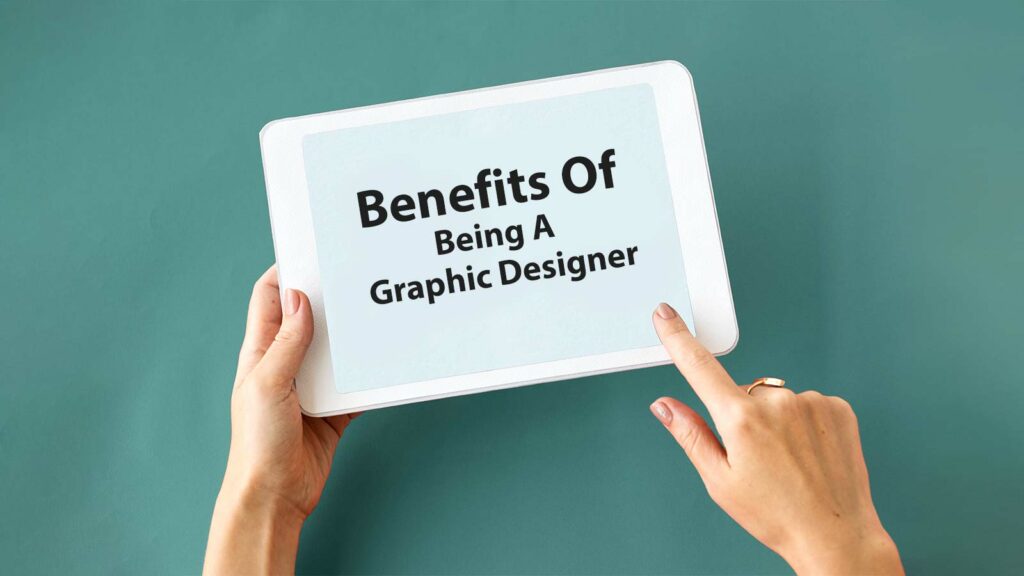
Being a graphic designer comes with a myriad of benefits that extend beyond the realm of creativity. It’s a profession that offers a blend of artistic fulfillment, professional growth, and diverse opportunities. Here are the significant advantages of being a graphic designer:
- Creative Expression: Graphic design allows for unparalleled creativity and self-expression. Designers have the freedom to bring ideas to life, experiment with various styles, and infuse their unique artistic touch into their work.
- Versatility and Flexibility: Graphic design is a versatile field with opportunities in various industries like advertising, marketing, publishing, web design, and more. Designers can work as freelancers, in-house designers, or for design agencies, providing flexibility in work arrangements.
- Continuous Learning and Growth: The dynamic nature of the field keeps designers constantly learning and evolving. New design trends, software updates, and technological advancements ensure that designers are constantly enhancing their skills and staying at the forefront of the industry.
- Problem-Solving Skills: Graphic designers are problem-solvers by nature. They analyze client needs, target audience preferences, and project objectives to create visually appealing solutions. This sharpens critical thinking and analytical abilities.
- Job Satisfaction: Seeing a project from concept to completion and witnessing the positive impact of design on a client’s brand or message is incredibly satisfying. It instills a sense of accomplishment and pride in one’s work.
- Communication and Impact: Designers play a crucial role in conveying messages effectively. They bridge the gap between ideas and comprehension by using visuals, aiding better communication and creating a lasting impact on the audience.
- Collaboration and Networking: Graphic designers often collaborate with professionals from diverse fields, fostering a rich network of connections. Working with writers, marketers, developers, and clients helps broaden perspectives and opens doors to potential collaborations.
- Global Reach and Recognition: In the digital age, designers can showcase their work to a global audience through online portfolios and social media. This exposure can lead to international opportunities and recognition within the design community.
- Monetary Rewards: Graphic design can be financially rewarding, especially for experienced professionals or those with specialized skills. The demand for skilled designers often translates into competitive salaries, freelance opportunities, and the potential to work on high-profile projects.
- Contribution to Society: Graphic designers can use their skills for positive causes, such as designing for non-profits, charities, or initiatives that aim to make a difference in society. This provides a sense of purpose and the opportunity to give back to the community.
Frequently Asked Questions
Can Graphic Design Help In Increasing Brand Credibility?
Absolutely. Graphic design plays a pivotal role in shaping brand perception and credibility. Professionally designed visuals and materials convey a sense of professionalism, trustworthiness, and reliability to the audience, which is crucial for a positive brand image.
How Does Graphic Design Contribute To Effective Marketing Strategies?
Graphic design is the cornerstone of successful marketing. Visually appealing designs capture attention and effectively convey messages. From eye-catching advertisements to engaging social media visuals, strategic graphic design significantly boosts marketing efforts, aiding in customer engagement and conversion.
Can Good Graphic Design Lead To Increased Customer Engagement?
Answer: Absolutely. Well-designed materials and visuals are more likely to engage customers. Intriguing designs, clear layouts, and compelling visuals not only attract but also retain the audience’s attention, resulting in higher engagement levels and better brand recall.
How Does Graphic Design Impact User Experience In Digital Platforms?
Graphic design significantly impacts user experience (UX) in digital platforms. Intuitive and aesthetically pleasing designs enhance ease of use, navigation, and overall satisfaction. A well-designed user interface (UI) ensures that users have a seamless and enjoyable experience, leading to increased user engagement and satisfaction.
Is Graphic Design Primarily For Businesses, Or Can Individuals Benefit From It As Well?
Graphic design benefits both businesses and individuals. For businesses, it’s crucial for brand identity and marketing. For individuals, it enhances personal branding, improves visual communication, and aids in showcasing skills and portfolios, making a solid impact in the professional sphere.
How Does Graphic Design Contribute To The Success Of A Startup Or Small Business?
Graphic design is instrumental for startups and small businesses as it helps them establish a strong visual identity from the outset. A professional and memorable brand image attracts customers, builds trust, and sets them apart in the competitive market, significantly contributing to their success and growth.
Can Graphic Design Improve Website Performance And User Engagement?
Yes, graphic design directly impacts website performance. Optimized visuals, a pleasing layout, and an intuitive design enhance loading speed and user experience. Engaging graphics and a well-organized layout keep visitors on the website longer, reducing bounce rates and improving overall engagement.
Final Discussion
In a society increasingly dependent on visual communication, the relevance of graphic design cannot be understated. From boosting company identity and building trust to strengthening marketing tactics and user experiences, its influence is enormous. Graphic design works as a catalyst, converting ideas into appealing images that not only deliver messages but create lasting memories.
It connects creativity with strategy, generating designs that appeal to people and generate significant relationships. Whether in the areas of business or personal efforts, the rewards are vast—improving engagement, magnifying recognition, and, ultimately, driving success. Embrace the power of graphic design because it is a transforming force that influences how we view, interact with, and remember the world around us.

















































